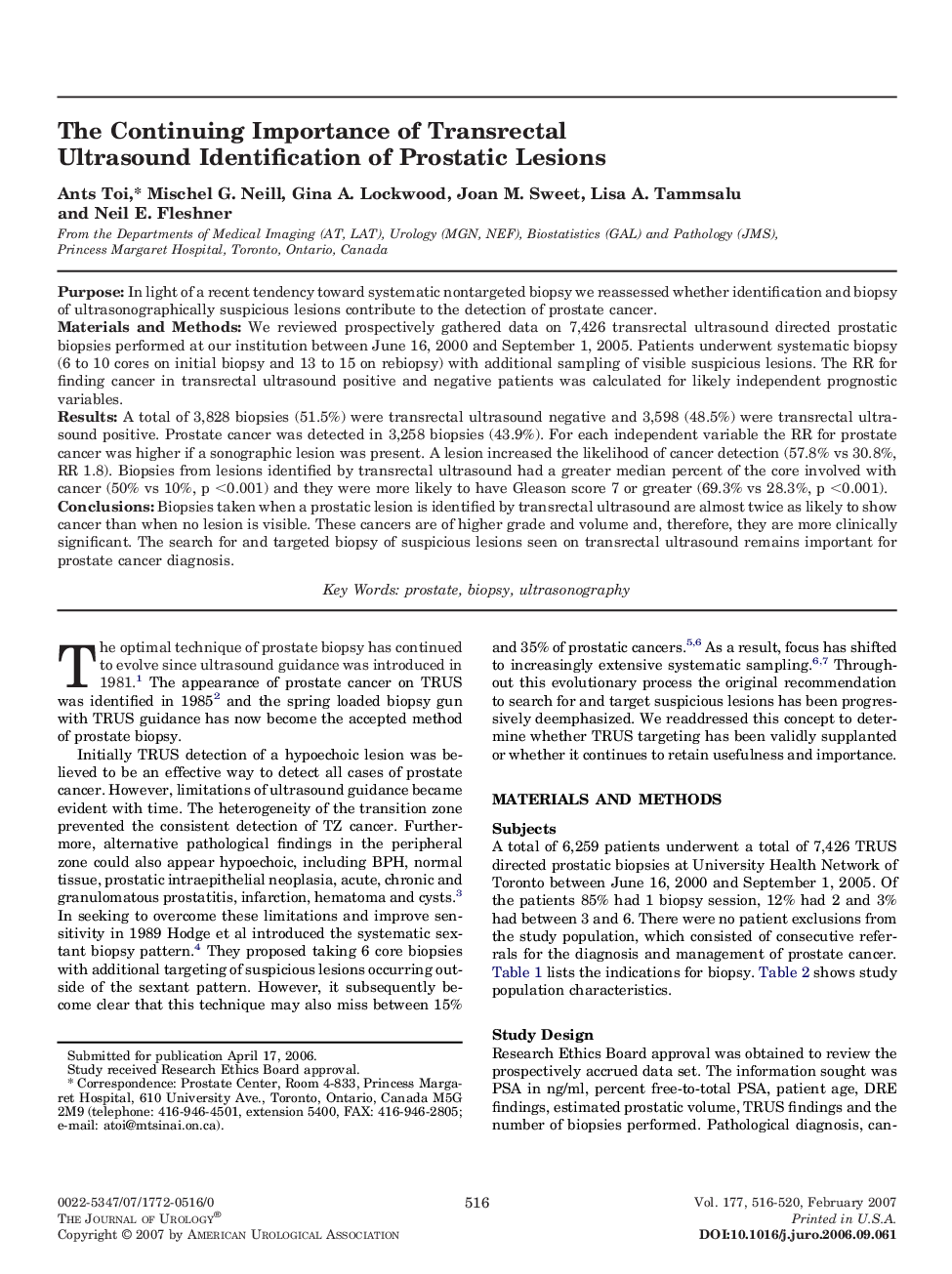| Article ID | Journal | Published Year | Pages | File Type |
|---|---|---|---|---|
| 3875451 | The Journal of Urology | 2007 | 5 Pages |
PurposeIn light of a recent tendency toward systematic nontargeted biopsy we reassessed whether identification and biopsy of ultrasonographically suspicious lesions contribute to the detection of prostate cancer.Materials and MethodsWe reviewed prospectively gathered data on 7,426 transrectal ultrasound directed prostatic biopsies performed at our institution between June 16, 2000 and September 1, 2005. Patients underwent systematic biopsy (6 to 10 cores on initial biopsy and 13 to 15 on rebiopsy) with additional sampling of visible suspicious lesions. The RR for finding cancer in transrectal ultrasound positive and negative patients was calculated for likely independent prognostic variables.ResultsA total of 3,828 biopsies (51.5%) were transrectal ultrasound negative and 3,598 (48.5%) were transrectal ultrasound positive. Prostate cancer was detected in 3,258 biopsies (43.9%). For each independent variable the RR for prostate cancer was higher if a sonographic lesion was present. A lesion increased the likelihood of cancer detection (57.8% vs 30.8%, RR 1.8). Biopsies from lesions identified by transrectal ultrasound had a greater median percent of the core involved with cancer (50% vs 10%, p <0.001) and they were more likely to have Gleason score 7 or greater (69.3% vs 28.3%, p <0.001).ConclusionsBiopsies taken when a prostatic lesion is identified by transrectal ultrasound are almost twice as likely to show cancer than when no lesion is visible. These cancers are of higher grade and volume and, therefore, they are more clinically significant. The search for and targeted biopsy of suspicious lesions seen on transrectal ultrasound remains important for prostate cancer diagnosis.
